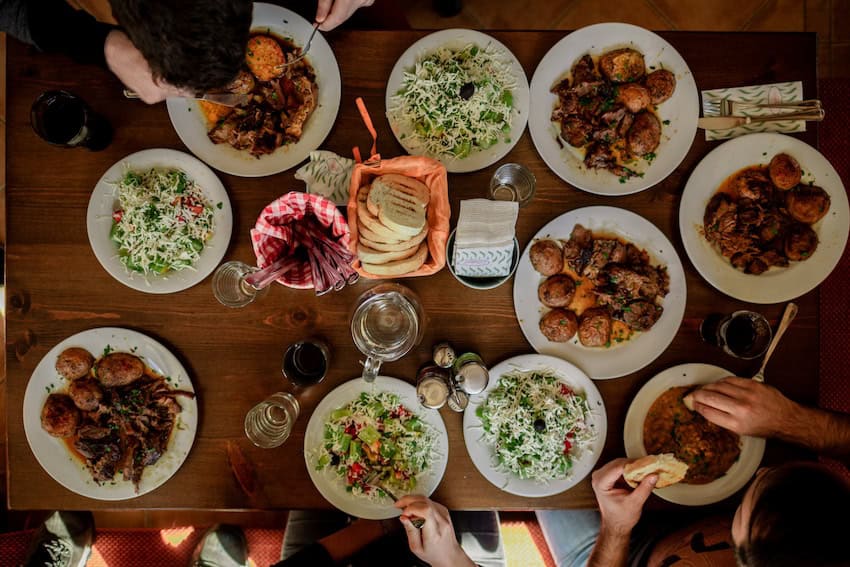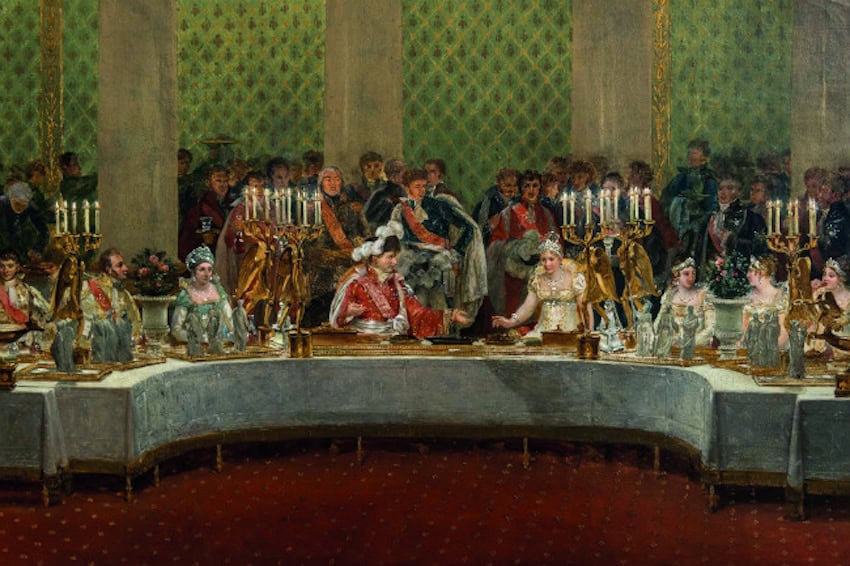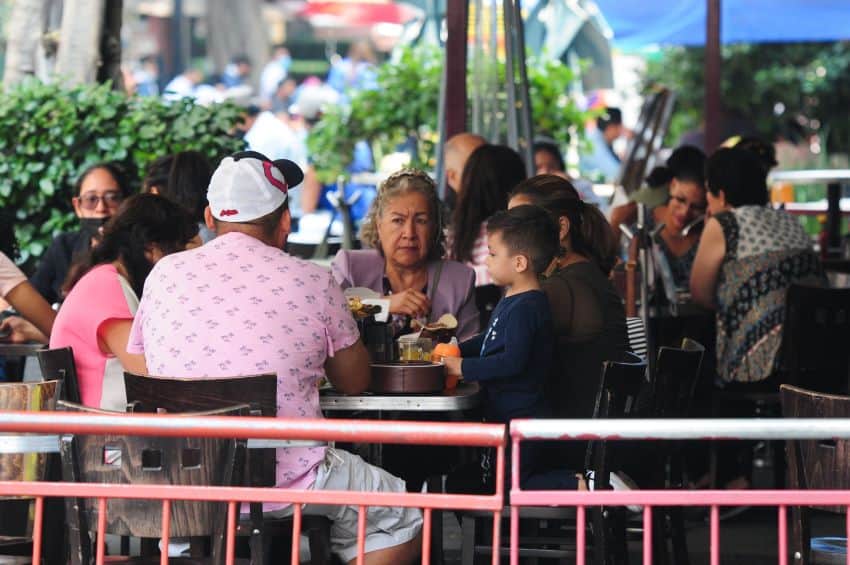Many expat friends have asked me about a restaurant dynamic that makes them uncomfortable. They don’t understand why waiters are quick to clear the table but need to be flagged down later to get the check. I think sobremesa explains it all.
Sobremesa is a cultural tradition ingrained in Mexican culture. The word is derived from the Spanish words “sobre” (over) and “mesa” (table).

When you get together for a meal in Mexico, the experience is rarely limited to just eating. We stay at the table and engage in meaningful conversation, sharing life updates long after dessert. This after-meal moment can stretch for hours and is devoted to strengthening social bonds.
The rich history of sobremesa
Historically, it’s not hard to find antecedents to the sobremesa tradition. In the ancient world, Roman emperors and guests indulged in lavish banquets, after which, reclining on their divans, they were entertained by acrobats, actors and poets.
During the Renaissance, bourgeois etiquette escalated among the great families of Italy, including the Medicis and the Sforzas. This era saw Leonardo Da Vinci captivate guests after dinner by presenting his intricate machine models and works of art.
During the French Revolution and the opulent reign of the Napoleonic Empire, sobremesa emerged as a core aspect of gatherings. Aristocrats showed their lavish lifestyle and sophistication by hanging out long after the meals.

The ritual as it is practiced in Mexico originated in Spain in response to heavy three-course meals and hot weather, especially in the south of Spain, where there would be little incentive to end a comida quickly and go back outside. As it would be wildly inappropriate to have a siesta right at the table, sobremesa became a delightful alternative to allow for healthy digestion.
The wellness benefits of this tradition
Apart from its cultural significance, sobremesa appears to offer health benefits. Taking time to relax before and after a meal has been linked to improved digestion and overall well-being. By allowing the body to properly digest food in a relaxed state, sobremesa promotes better nutrient absorption and reduces the likelihood of digestive discomfort.
Sharing stories, laughter and insights with loved ones can uplift spirits and nourish the soul.
Watch your manners in Mexico

Mexicans think it’s rude to mention difficult topics during a meal. Conversation while eating is mostly about the food and praising the cook. However, after the meal, acceptable topics are nearly unlimited. Sobremesa conversations can range from lighthearted banter to deep thoughts. As you may know though, once tummies are full, people can talk about anything.
This after-meal ritual is such a barometer of cordiality in Mexico that if you want to paint a picture of high tensions, all you have to say is, “We didn’t even stay for the sobremesa.”
Although it can go on longer on the weekends, the sobremesa can be the weightiest part of a business meal. It starts once the eating is done and the plates have been cleared. Deep conversations are reserved for after eating because in Mexico, speaking with your mouth full is reprehensible.
By the way, if you tend to talk while chewing, don’t be surprised if your guests suddenly leave.
Sobremesa etiquette at restaurants

When you go to a restaurant and find a waiting line, you’ll probably get a strange look if you ask for an estimated waiting time. That’s because there’s no way to predict how long guests will stay and chat at their table once they’ve finished their meal.
Other cultures may think it’s rude to keep people waiting for their table, but a Mexican will find it rude to get up and leave as soon as they’re done with the food.
The art of lingering
So, dear amigos, remember this when dining out in Mexico: if your plates are quickly cleared, the waiter is inviting you to stay and enjoy your sobremesa. Waiters will bring you the check only when you are ready to leave.
This fast-paced world is calling us to slow down and savor the moment. Sobremesa is considered one of the barometers of joy in our culture. Whenever there is a chance, let’s practice the healthy habit of staying at the table, relaxing and enjoying each other’s company.
Sandra Gancz Kahan is a Mexican writer and translator based in San Miguel de Allende who specializes in mental health and humanitarian aid. She believes in the power of language to foster compassion and understanding across cultures. She can be reached at: [email protected]
